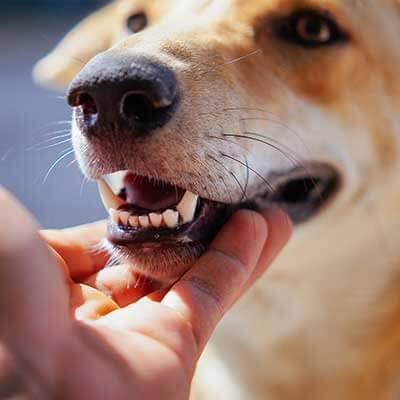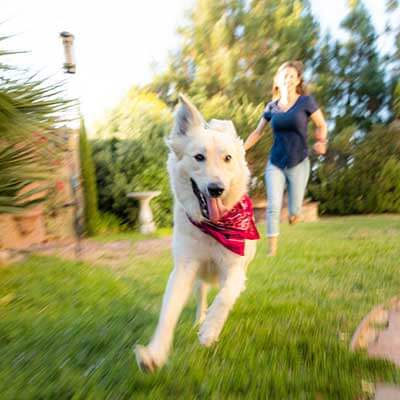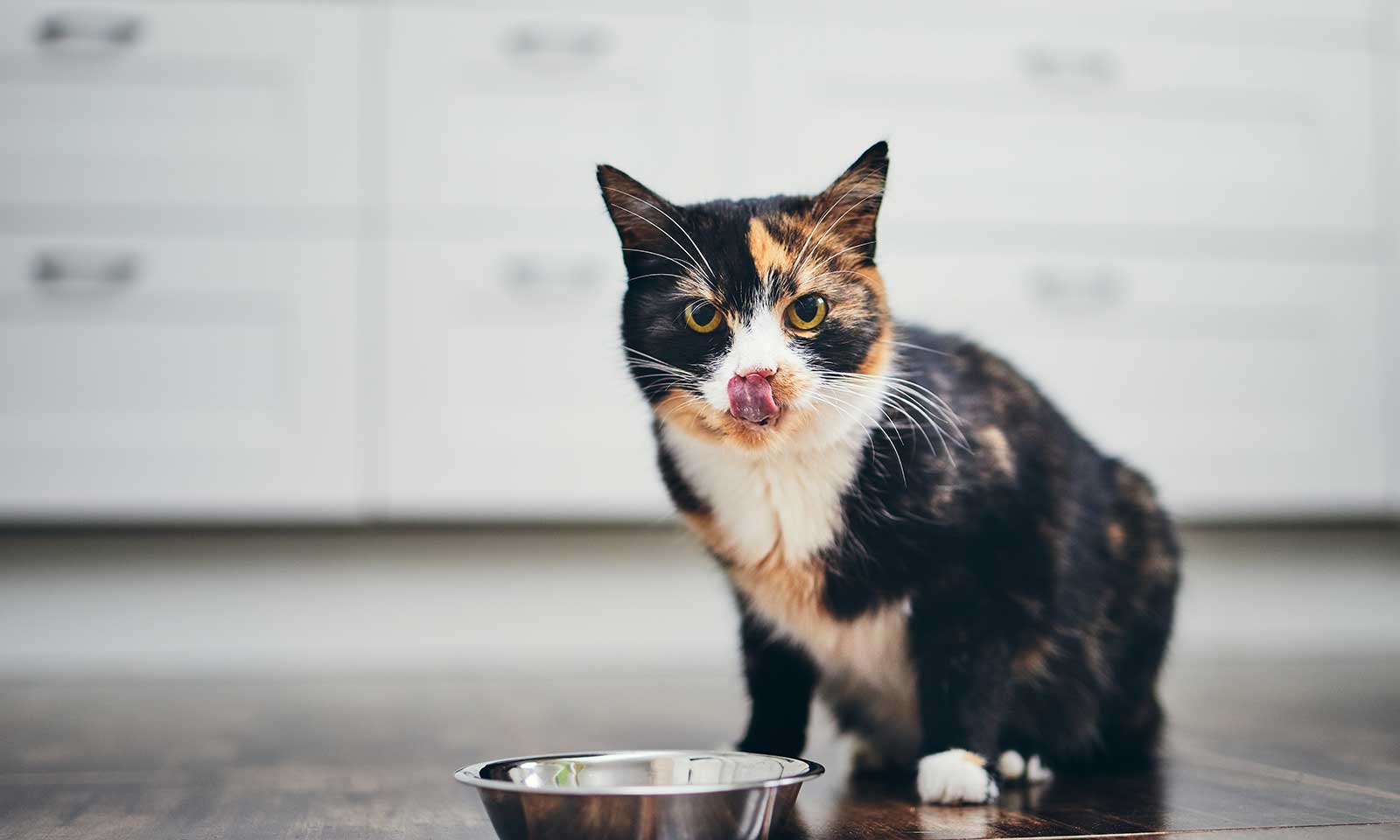Rocklin, Roseville, & Lincoln, CA Pet Dentist: Pet Dental Care Is Important For Good Pet Health

One of the most commonly overlooked and most important areas of maintaining your pet’s good health is regular oral and dental care. A comprehensive routine of care for teeth both above and below the gum line can dramatically extend your pet’s life. Rocklin Ranch Veterinary Hospital & Urgent Care and Rocklin Ranch Veterinary Hospital at Pacific Street recommends preventive care as the key to maintaining your pet’s long-term health.
Dental Examinations are Paramount
At every exam, your pet’s mouth will be thoroughly checked for:
- Correct bite
- Jaw injury
- Abscesses
- Gingivitis
- Fractured teeth
- Damage to enamel
- Tartar and calculus build up
We will make recommendations to maintain or help improve your pet’s oral health. Your pet might need a professional cleaning, or prophylaxis, for his or her teeth. We’ll show you how to brush your pet’s teeth and may make other recommendations that can help keep the teeth cleaner.
Common Pet Dental Problems
Dead Teeth
There are many reasons for a pet’s teeth to die. Unfortunately, many pets will almost never show outward signs of pain, and this problem goes undetected. The most common cause is when the root canal becomes exposed. We may find the condition that caused this when we perform an oral exam on your pet. Other reasons are a periodontal lesion that progresses to the bottom of the tooth, disruption of the blood supply, or injury to the jaw or tooth itself. Some dead teeth become discolored, but not all discolored teeth are dead. Dental radiographs are necessary to confirm the diagnosis.
Worn Teeth
There are many causes for worn teeth in a dog or cat. The most common is itching and chewing because pet hair and some toys like tennis balls are very abrasive. This commonly causes severe wearing of the incisors, although the canine teeth can also be affected. It can progress all the way to the gum line and occasionally below. Dogs will often experience wear on their smaller front cheek teeth (premolars) and the back surface of the canines. This kind of chewing every day for years can cause significant wear. Likewise, malocclusions or misaligned teeth can cause two teeth to come together and wear on each other.
Worn teeth may look like fractured teeth, but usually are not a significant problem. If the wear occurs slowly, the tooth will respond by laying down extra tooth structure in response to the tooth loss to protect itself. The tooth will generally stay alive and not require any additional therapy. If the tooth is broken, or the wear occurs too fast or continues too far, it will require either root canal therapy or extraction. For a correct diagnosis, we recommend radiographs on all significantly worn teeth.
Fractured Teeth
Broken or fractured teeth are a very common occurrence in dogs and cats. They can break after trauma or due to chewing on hard objects. The most common teeth that are broken are the canine (fang) teeth in dogs and cats, and the upper fourth premolar, the large tooth on the top in the back, in dogs.
After a tooth is fractured, bacteria from the mouth can gain access to the root canal and infect the tooth, becoming a haven for bacteria. These bacteria can go on to infect the bone in that area and eventually the byproducts of this infection and white blood cell enzymes may cause bone destruction. Blood vessels can pick up the bacteria and spread it to other areas of your pet’s body, affecting the liver, kidneys, and heart valves.
There are three options for dealing with a fractured tooth:
- Standard root canal therapy
- Vital pulpotomy (if the fracture is fresh and not yet severely infected)
- Extraction of the offending tooth
We prefer to save the tooth whenever possible and will always talk with you about the options available for treating your pet’s broken tooth.
Abscess
This advanced infection of a tooth is usually caused by a fracture that has been infected by oral bacteria. These bacteria will gain access to the jaw through the bottom of the tooth. A combination of bacteria and white blood cell enzymes can cause bone destruction that, if allowed to progress, may travel through the bone of the upper jaw and break out either on the gum tissue over the tooth or on the skin under the eye. This is the only time that endodontic disease is usually noticed by a pet owner, as most dogs and cats do not show any outward signs of disease.
We will treat an abscess with appropriate antibiotics, but draining it may be indicated as well. The underlying tooth disease can either be treated by root canal therapy or by extracting the affected tooth. Without treatment, the infection will return.
Enamel Hypoplasia
When tooth enamel does not form correctly or is damaged during its development, a defect or chipping of the enamel covering can happen. This will expose the underlying dentin. The defect can be isolated to one tooth or area of a tooth, or may be widespread throughout the mouth. The teeth are only slightly weaker than normal teeth, but are much more susceptible to wear. If aesthetics are a concern, a restoration can be placed over the area. If the chance of wear is excessive or the chance of fracture is high, as with working dogs, then crown therapy is warranted. Before any restorations are placed, it is best to ensure the teeth are healthy with dental radiographs.
Feline Oral Resorptive Lesions
Feline oral resorptive lesions are second only to periodontal disease. Although we do not know exactly why they occur, we do know that they result from the activation of cells that are responsible for the normal remodeling of tooth structure. In this disease, however, these cells continue to resorb tooth structure until the entire tooth is lost. It has been reported that more than half of cats over 6 years of age have at least one, and those that have one usually have more.
Dental radiology is used to diagnose lesions under the gum line, to determine the extent of the lesion, and if there are any root problems.
There are three basic methods of therapy for these lesions:
- Prophylaxis and fluoride therapy
- Restoration (filling)
- Extraction
If the lesion is very mild and only involves the enamel, we will clean and polish the teeth and send the owner home with fluoride gel for home use. If the disease is moderate (involving the enamel and dentin, but not into the root canal), we will give you the option of extraction or restoring the tooth. It is not an option to ignore these lesions, as they are very painful.
Periodontal Disease
Periodontal disease occurs when bacteria from the mouth form on the teeth creating a substance called plaque. If not removed regularly, plaque gets under the gum line. Bacteria in the plaque secrete toxins that damage the periodontal tissues. The bacteria also cause inflammation that, as it progresses, creates deeper pockets in the gums around a tooth. Bone in the area will be weakened, with a resulting end stage of tooth loss.
Mouth bacteria can enter the bloodstream and be carried to the kidneys and liver, and can cause microabscesses within these organs. Bacteria can become attached to the heart valves and cause a disease called endocarditis. Your pet’s body will attempt to fight the bacteria on a daily basis, and this can lead to chronic ill health.
Treatment of periodontal disease includes a thorough dental prophylaxis including charting and a treatment plan. If no periodontal pockets are found, no treatment other than comprehensive home care is necessary. If your pet has calculus (tartar), our professional cleaning will help the care you give at home to be effective. If there is current periodontal disease, then surgeries may be attempted to save the teeth. However, your pet’s overall health and your opinions are always taken into account prior to recommending or performing any surgery.

Comprehensive Dental Care for Your Pet's Health
Digital Dental X-rays for Pets
Because we can see only about half of your pet’s dental problems with our eyes, we use digital dental X-rays. This type of imaging allows us to see the state of your pet’s teeth both above and below the gum line. Digital technology displays images almost immediately so that we can see every detail.
Teeth Cleaning is Part of Your Pet’s Regular Routine
Regular dental prophylaxis (cleaning and polishing) helps keep your pet’s teeth and gums healthy. The teeth are ultrasonically scaled, removing tartar and calculus. The final step is polishing to make the tooth surface smooth so that bacteria have no place to hide.
Anesthesia
General anesthesia makes sure that your pet will have no anxiety and will not move. Just as we do in surgery, whether we are performing a cleaning or extraction, we also will perform pre-anesthetic blood tests before we administer any anesthesia. Heart rate, blood pressure, and temperature are carefully monitored throughout the treatment, and a skilled veterinary technician will be with your pet during the procedure and recovery.

